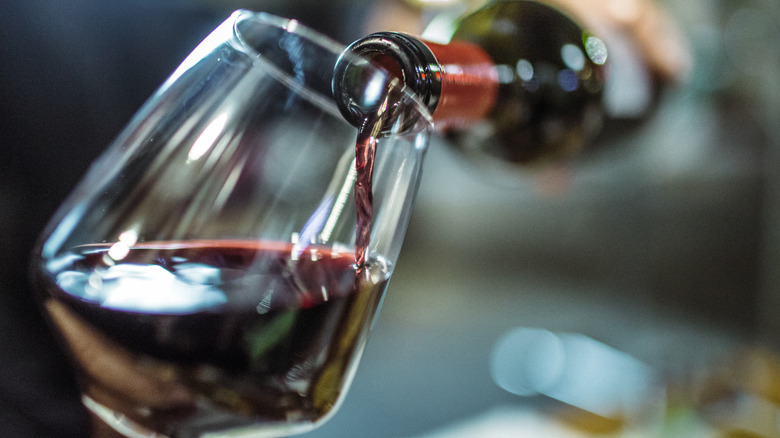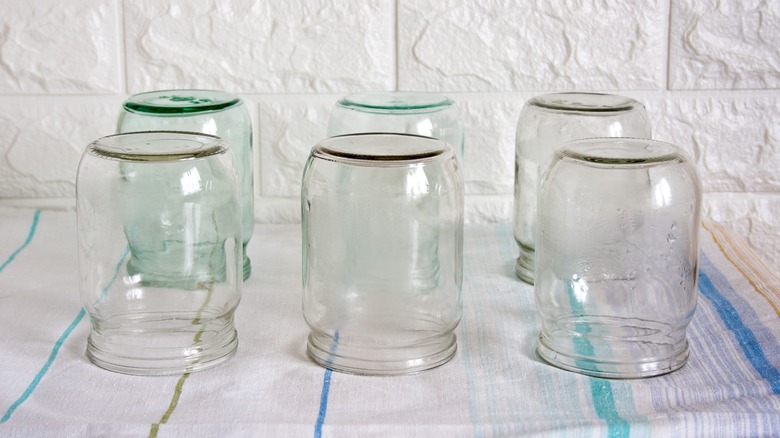Why You Should Transfer Wine To Smaller Containers As You Drink It
From its pleasant taste to the ease with which it pairs with food, it's no surprise that wine is a mainstay at celebrations, dinners, and other social gatherings around the world. It is a great treat to enjoy on your own, too, though it can pose a problem: leftover wine. The shelf life of open wine isn't very long, and it is even shorter if you don't store your wine properly. In order to keep your wine fresher for longer without expensive gadgets, we recommend transferring it to progressively smaller containers between each drinking session.
When it comes to preservation, oxygen is the enemy of wine. This is because when wine comes into contact with oxygen, the oxygen reacts with compounds in the wine, changing its taste, aroma, and color. The more space that oxygen has to touch the wine, the more quickly this chemical reaction occurs and the faster your wine declines in quality. As you empty a bottle of wine, more and more air takes the place of where the wine used to be, exposing the remaining wine to excess oxygen and making it deteriorate more rapidly. If you pour your leftover wine into a smaller vessel, however, the liquid will fill that container more completely, leaving less room for oxygen to affect the wine and keeping it tasting nearly as good as the day it was opened.
How to pick new wine containers
With some planning ahead and a little bit of math, it is quite likely that you can find a container for your wine somewhere around the house, rather than buying something specific. A standard wine bottle holds 750 milliliters, or just over 25 ounces, of liquid. A standard wine pour is 5 ounces. So, for every glass of wine you enjoy, you will want to find a container roughly 5 ounces smaller than the one before it. For example, a standard size mason or pasta sauce jar is 16 ounces, so after two glasses of wine, you could store the remainder in a spare jar with little room at the top for air. From there, large jam jars or even a small deli container can work in a pinch. Feel free to get creative with what you have; just remember to reduce the size by 5 ounces for every glass you consume.
In addition to this handy trick, there are a few more measures you can take to ensure the best possible preservation of your wine. Storing open wine in the fridge slows down the effects of oxygen on the liquid, as does storing it upright. All of these steps are accessible to anyone, no matter their wine budget or access to fancy drinking tools, so go forth and enjoy!

